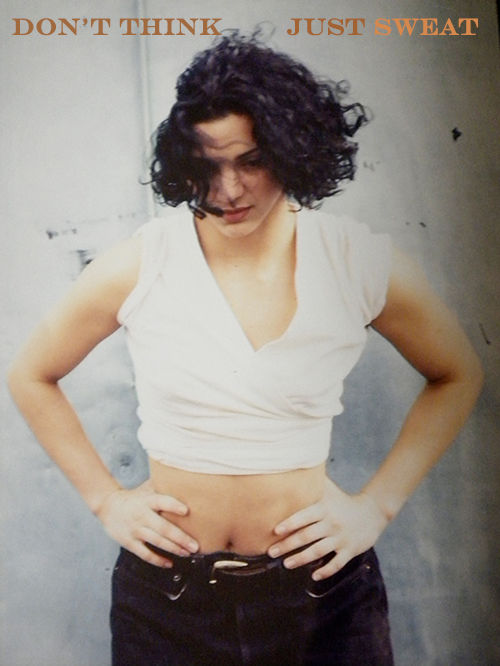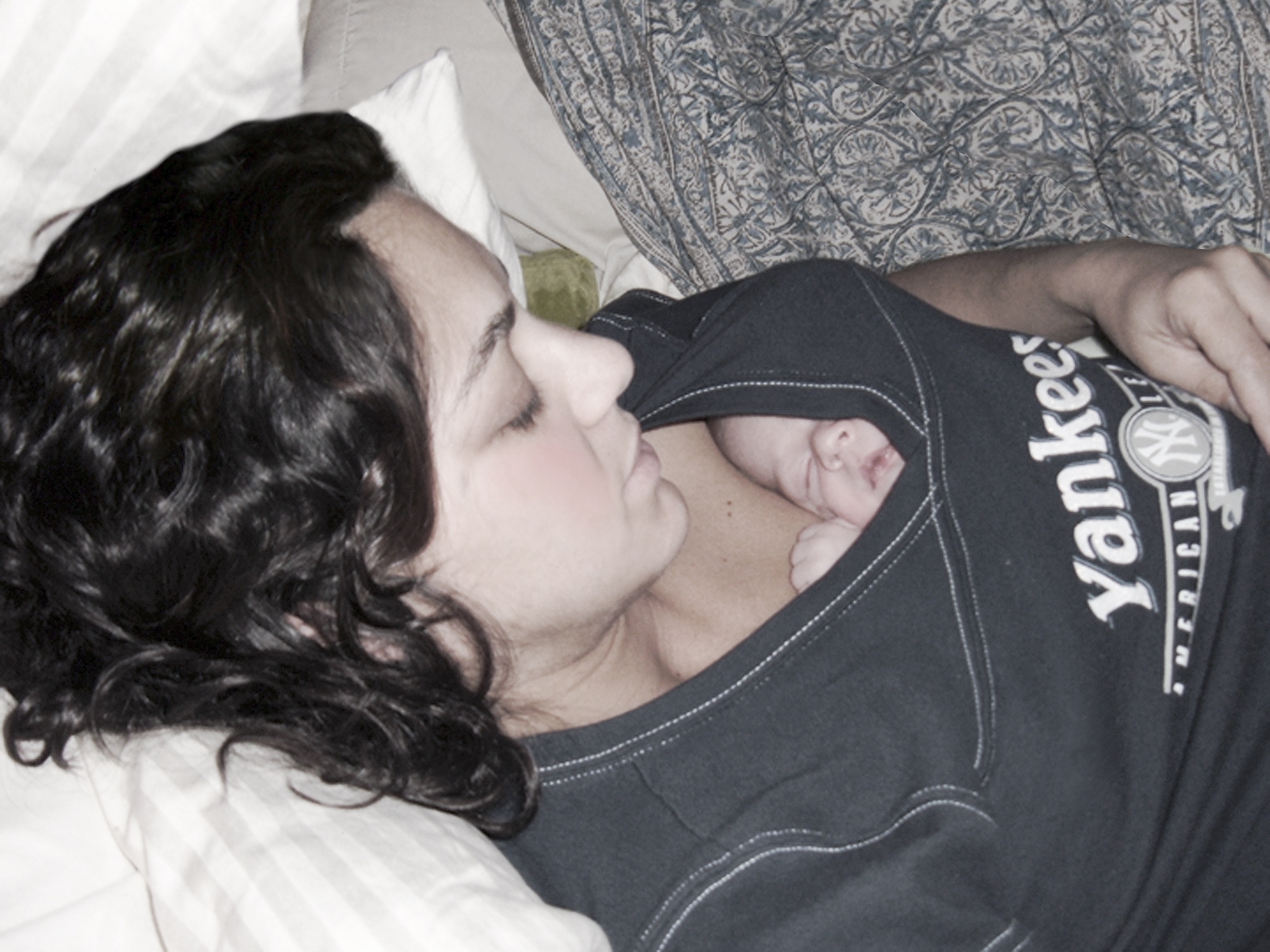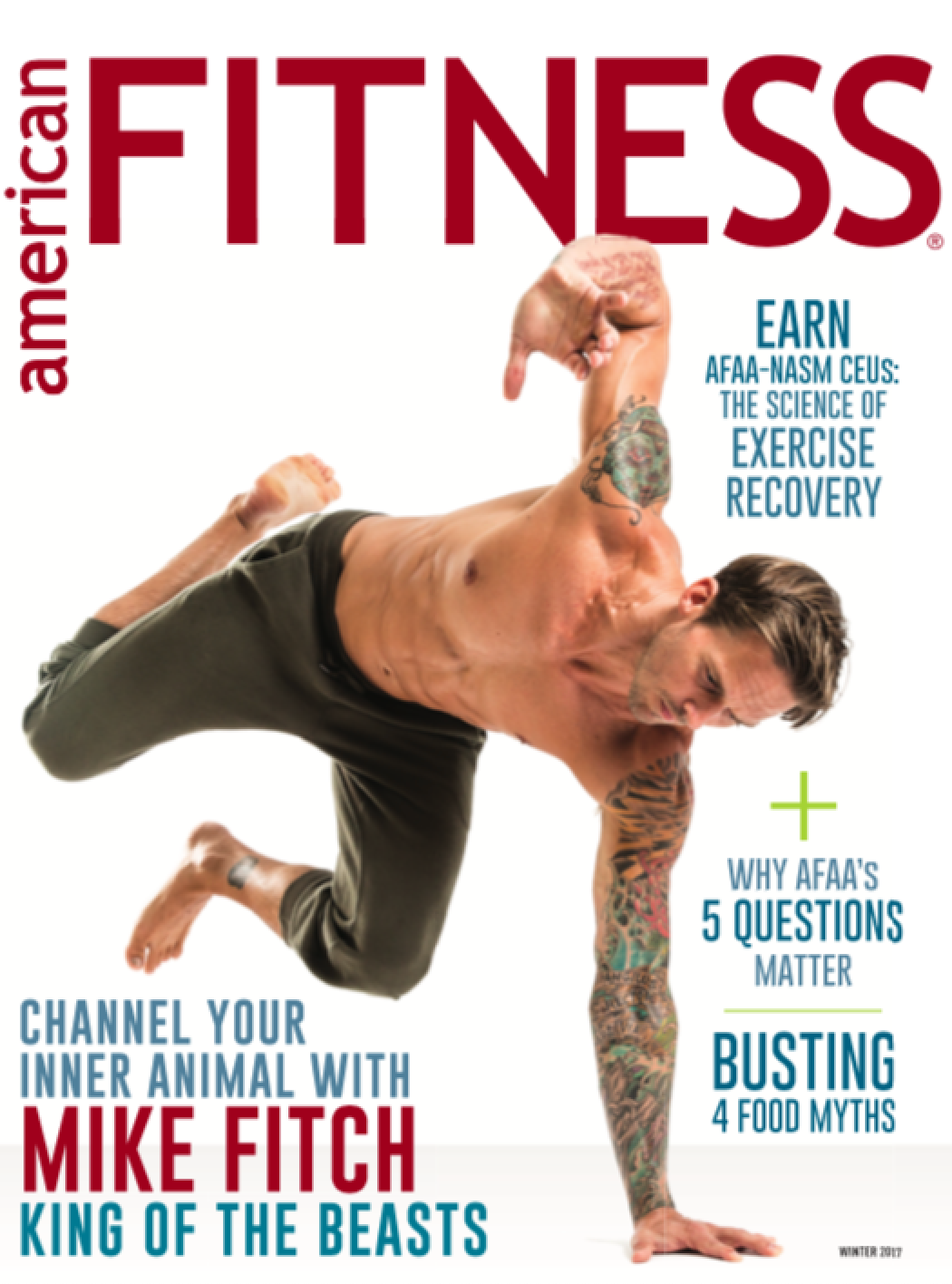The Health Trifecta: Exercise, Food & Rest
Part I: An Exercise in Minimalism
Getting or Staying in Shape When You’re Exhausted and Overwhelmed

My son was a toddler and I still hadn’t figured out the self-care conundrum. I’d had a hellish eighteen or so months of pregnancy and post-partum recovery including inguinal ligament hernia surgery at the end of my second trimester, a blood born strep infection and post-partum depression among other things. And my son didn’t sleep through the night until he was four and a half years old.
I walked the world like a zombie during that time. I was exhausted, didn’t enjoy my workouts and had other priorities that were time consuming. I never imagined that four years after giving birth I would still be carrying around more than ten extra pounds. That was a lot for me at five three and a half, having never been over 120 pounds outside of pregnancy. The extra weight made me feel off balance and out-of-whack. I had been a martial artist for twenty-five years and a personal trainer for nearly fifteen. How was it I couldn’t figure out how to get rid of a few pounds?
Ultimately it took a radical change of perspective about exercise, coupled with an in-depth study of the American food system and some major dietary changes (nothing with a name like keto or paleo) to get me on track. Let’s talk exercise and I’ll work on the dietary blog next.
Before I go on though, here are the spoilers:
- Set Goals: If you want to succeed come up with a simple plan, set reasonable goals and make some marks on a calendar.
- Embrace movement micro-sessions: 5 to 10 minutes once per day can stave off muscle atrophy and other health risks and can even get you in shape believe it or not. Work up to twice per day and you’ve really got something.
- PLAY whenever possible. Exercise isn’t work when you’re having fun.
Feel better five minutes at a time. It might seem crazy, but 5 to 10 minutes a day can make you healthier and end the guilt spiral that may be worse for you than the lack of movement.
The Time Dilemma:
The idea that to be in shape means to spend hours in the gym every day is fundamentally flawed. And it may partly explain both the number of injuries people are experiencing and the high levels of obesity. We seem to be exercising in an all or nothing fashion. If we can’t fit in the class we planned to go to we just don’t do anything.
As it turns out for many people, especially women, long bouts of intense exercise like running can actually raise cortisol. If you’ve heard about cortisol you know it’s great if a lion is chasing you but not so good for digestion, rest, recovery or weight loss. We need to rethink our methods.
After recovering from pregnancy I was slower so there was even less time than before. Evening work outs no longer fit in, partly because I was exhausted by eight, partly because it was time to tuck my son in. None of my favorite martial arts classes offered child care or ran in the morning. If I had to get a sitter and commute to a class it wasn’t happening–too complicated, too expensive, too much else to keep track of. So, I had to find a secondary option.
I began going to the gym when work allowed, but every day was different and it was impossible to stay motivated. It went on like this for years. I dabbled. I walked a lot but didn’t lift weights often enough and lost muscle. I couldn’t find anything fun and the realization began creeping in that if I didn’t do something soon, in ten years I wouldn’t recognize myself. When the pain of not doing something outweighs the pain of doing it, that’s when things change.
I don’t need to go on about my personal experience, but you probably have your own version of trying to fit extras in to an already over-taxed or ever-changing schedule.
As moms we are never going to put our children’s needs, our work or cooking healthy food last, so how do we prioritize self care? Self care is big right now mainly because we’re all so over-scheduled and overextended (they just installed meditation pods in my son’s public school!). With so much pulling at us, we need to engage in activities that feed us or we won’t be able to feed others.
What I discovered was that there are two ways to succeed:
- Find something enjoyable that fits into your schedule
Maybe you love Zumba or you happen into a bi-weekly group bike ride. Some of us are lucky and there’s a great class with daycare nearby at the perfect time, but this often isn’t the case. Often the hardest part isn’t actually exercising, it’s finding the right class or schedule.
- or exercise in 5 to 10-minute micro-sessions once or twice a day.
Micro-sessions break down into two factions:
- Regimented bouts of exercise using an app or a series of exercises you’re familiar with.
- A way of life in which you fit exercise into normal functions, both by finding moments to play and by always choosing the hard way to do things (taking the stairs, walking farther, carrying a backpack everywhere, lifting and carrying whenever the opportunity arises).
What we want to accomplish with a movement plan is to:
- Raise our heart and breath-rate and subsequently our metabolism
- Increasing your heart rate charges your heart battery–that is, it reminds your heart how hard it can work. If you don’t use it, you lose it, like a phone battery that only charges to 80 percent.
- Breathing hard cleanses and strengthens your lungs.
- Raising your metabolism means you burn more calories at rest. It stimulates digestion. That means you’re moving nutrients and waste and renewing cells rather than letting food stagnate and ferment in your gut ultimately causing skin disorders, headaches, weight gain and down the road more insidious problems.
- Maintain or build muscle. As we get older we lose muscle which includes the heart. Sarcopenia, muscle loss, is one of the top causes of aging and death.
- Recover stronger and happier. This is best done as part of a nightly wind-down routine. 10 minutes of yoga or rolling out. Think of this as taking your best outfit to the dry cleaners rather than leaving it in a pile after use. The outfit you clean properly, iron and hang up will last longer and look better.
But HOW does a sleep-deprived mom exercise when she’s exhausted?
The answer is that if you’re really sick with lack of sleep you don’t. But, if you can muster even five minutes of gentle, restorative yoga, you are beginning a helpful habit that may cause you sleep deeper even if you can’t sleep longer. A mind that is wired coupled with a body that is tired will naturally make sleep difficult. If you can’t find more time to sleep, short bouts of exercise–breathwork, yoga and walking–can do quite a bit to help you sleep deeper even if longer isn’t an option. And it can stall strength loss and weight gain while you figure out how to fit in more movement.
Some people have genes that predispose them to deep sleep. I’m not one of the lucky ones, but exercise and a sleep routine doubled my deep sleep time from 40 minutes to closer to an hour and a half. I’m not a huge fan of any one particular fitness tracker but tracking your sleep patterns for a few days or weeks at a time may help you get a hold on what works for you and what doesn’t. If you do ten minutes of yoga every night for a week and by the end of that week you are getting better sleep, you’ve learned something about yourself that will improve your health and your quality of life.
Counterintuitively exercise can sometime give us energy even when we’re tired. Movement actually charges our battery. So, even if you’re tired, a ten-minute walk can help you sleep. Consider that a five-minute walk per day adds 35 minutes of movement to your week while you’re listening to a podcast. Short bouts of movement and strength work add up.
Human beings are like perpetual movement devices, we gain energy through motion and wind down when we’re too still for too long.
The Specifics – Sort of:
I’m not going to dictate specific work outs here, rather I’m suggesting a shift in mindset. There are a million workouts on the web, in apps and on YouTube. The trick is to find something that you like, love or at least don’t hate to do.
Browse the list of yoga, exercise, meditation sites and apps at the end of this article for suggestions.
Make life your work out.
If you hate the idea of a regimented or gym-style work out, take any opportunity, or create opportunities to exercise in context. This is the way it used to be. No gyms, just life. Never pass up an opportunity to do something the harder way. Never pass up the opportunity to play or dance.
It makes no sense to drive and take an elevator so you can sit on a machine and sweat.
- Take the stairs. Why are there stair-climbers at the gym? Because it’s one of the best lower body and heart strengthening exercises. Climb stairs whenever the opportunity presents itself and you’ll never have to go to a gym.
- Exchange your purse or over-the-shoulder bag for a backpack (preferably with a hip brace). I know it’s not sexy but being in shape is and there are more fashion forward leather and canvas options than ever before. Carry everything you need and maybe throw in a little extra weight in the form of a hardcover book or two. Carry it every day to build lower body strength. Make your walk more of a hike.
- Try leaving 5 or 10 minutes early and parking farther away from the office. Get off the bus or train a few stops early. Even a few blocks extra a day adds up.
- Never pass up a chance to help somebody carry a box, unload the car, etc. Humans used to work out in the open air all day in the form of farming or hunting and walking long distances. (Lifting or carrying is good for you so long as you do it with proper form, wear the right shoes and you aren’t injured.)
- Walk whenever you’re on the phone. If you have to be on the phone for work (and it’s possible to move), make it a habit to get up and out of your chair. Humans were meant to move, lay down and squat, chairs are new and are a major reason for back and even digestive problems.
- Grab an app like DownDog or GLOW and do a 5 or 10 minute yoga session at any point during the day to loosen up and move your body. Do a quick session before lunch for better digestion. Some apps even offer chair yoga.
- Play! Enjoying your chosen activity is the single best way to get in shape.
- Throw a single song dance party every morning! Create a play list and put on a random song before you shower. The average song is two and half minutes long. Dance your heart out! Do it again when you get home. Work up to Bohemian Rapsody!
- Try 10 minutes of ping pong in your basement or even on the dinning room table! You can find table top kits that take up no space and can be used on any large table. As a bonus, ping pong increases hand-eye coordination which staves off Alzheimer’s and keeps your brain young and supple too.
- Get a dog and take her for long walks in the morning and evening. (Please find your new best friend at a shelter, not a petshop.)
- Do what your kids do. Climb the jungle-gym, hop on the swing and let them push you! Play tag. Have a tickle party and laugh until you can’t breathe. Long hard laughter is great for the abs and the vegus nerve. Don’t know what that is? Look it up!
- Throw a frisbee. It’s more fun than you might think and there will be lots of running to retrieve it.
- Learn hacky sack
- Practice your soccer dribble
- Dribble a basketball by yourself or with a friend.
- Jump rope with or without kids.
- Learn to juggle. Do a proper squat or lunge every time you drop a ball!
- Play handball against a random wall a few times a week.
- Push the stroller for a few minutes longer every day. You might also consider a Moby, or child carry pack to make the walk more of a hike. Most kids prefer to be up high where they can see what’s going on.
- If you like clubs or are social, find a group to move with. There are tons of MeetUps and other groups online.
If you prefer a more regimented or gym-style plan, do it with a series of micro workouts. Even a simple once-per-day, five to six day per week schedule can do wonders.
The only thing you ever have to change are the actual strength exercises so your body doesn’t habituate and plateau. Never do exactly the same thing for too long. So long as you do a slightly different work out every one to three months, this simple plan can work in perpetuity.
Try this once-a-day more traditional micro work out schedule:
- Day 1: Cardio, 5 to 10 minutes.
- Warm up for at least 3 minutes. Try yoga or hop on a cardio machine. Rolling out can actually be a great warm up. Watch a YouTube video on how to roll out properly.
- Do a 15 to 30 second sprint (a sprint means your highest level, so you shouldn’t be able to talk at all while you’re doing it.)
- Take a 30 second to 1 minute rest
- Repeat as many times as you can in 10 minutes. (You’ll be able to get in two to six sprints).
- Cool down for a few minutes, don’t just hop off with your heart racing, you may give yourself painful muscle spasms. Yes, I know the cool down adds a few minutes, but your cool down can be walking to your car. Just don’t sit or lie down. If you can stretch or roll out a bit after your cool down it will help with recovery.
- Make sure your doctor is okay with your plan. Start slowly and give yourself lots of credit!
- Day 2: Upper body strength, 5 to 10 minutes
- Day 3: Cardio, 5 to 10 minutes (as above)
- Day 4: Core strength, 5 to 10 minutes
- Day 5: Cardio, 5 to 10 minutes (as above)
- Day 6: Lower body strength, 5 to 10 minutes
The easiest way to organize your strength training plan is to focus on upper body one day, core the second and lower the third, that way you never work the same muscles two days in a row.
I always recommend exercises that strengthen posture: balance work, planking, wall-sits. Elastic bands are great and there are lots of bodyweight only work outs to look into in the form of YouTube videos and apps (I hope to have one of my own out soon!). Ask a friend what they use and look at five or more before deciding.
In order to achieve a specific goal of strength or weight loss most trainers recommend a minimum of three bouts per week of cardio and two bouts per week of weight training. If you like, you can always work up to 5 to 10 minutes twice per day–cardio for your first micro-session and weights for your second, or vice versa.
(Note: If you plan to work out during an office day, bring a good pair of sneakers. I always appreciate the way sweat makes my hair curl and my skin glow, but I have a protocol for cleanliness. Wipe down with a washrag and witch hazel and use a safe and healthy deodorant. My son and I are very happy with Primal Life Organics Natural Deodorant-no affiliation. You may also want to wear a t-shirt and bring your office top.)
Every lifestyle is different, every body is different, everyone has different needs. Still, you may be surprised at what five or ten minutes a day can do for your health, wellbeing and self-confidence. If you’re stuck and feel hopeless, start with a morning single-song dance party. Put on your favorite music and grab your baby or toddler. Teach her a love of music and movement. A thousand mile journey begins with a single dance step!

What can a new mom do when she’s exhausted and overwhelmed? Minutes here and there. And that may be enough….

………..
A Few Exercise, Yoga and Breathing Site & App recommendations:
(These are my honest recommendations. I receive nothing for the below suggestions other than the joy of sharing them with you.)
- GLO – Online yoga, meditation, Pilates, & fitness classes
- DownDog – Yoga, HIIT, Meditation, Bar, Prenatal Yoga
- Animal Flow – Animal Flow is a bodyweight workout. It includes a range of movements and combinations that are grouped into categories we call the “Six Components.” Each Component is designed to elicit specific results. The Six Components can be mixed and matched in many ways, allowing you to incorporate one, some, or all of them in your workouts.
- The Breathing Class – A clinical psychologist and a leading expert in mental health and fitness, Dr. Belisa Vranich is the author of Breathe: The Simple, Revolutionary 14-Day Program to Improve your Mental and Physical Health (St. Martin’s Press/Hay House). Dr. Belisa is a regular guest on national television; e.g., CNN, Fox News, the Today Show, Good Morning America, and Inside Edition, and has been interviewed by Anderson Cooper, Matt Lauer, Meredith Vieira, Bill O’Reilly, and Nancy Grace. Dr. Oz has recognized her as one of the top US doctors in her field.
- Ziva Meditation – We believe in having fun and playing big—doing the work we were put on this planet to do. Mastering meditation, but really… mastering life. We believe that meditation is not enough, and we’re all in on The Ziva Technique: mindfulness, meditation and manifesting. We believe that practicing these 3 M’s makes us better partners, colleagues, friends and citizens. Our 40,000+ students agree.
Article: Two experiments in the minimum effective dose of exercise by Dr. John Berardi
Most people assume that getting in shape – or staying in shape – requires hours of weekly exercise and rigid meal planning. Not true. This article offers an example workout routine. Dr. Berardi suggest sprints and rests of 15 seconds, others say 30 seconds to a minute. Find what works best for you. It will change over time if you do it regularly.


